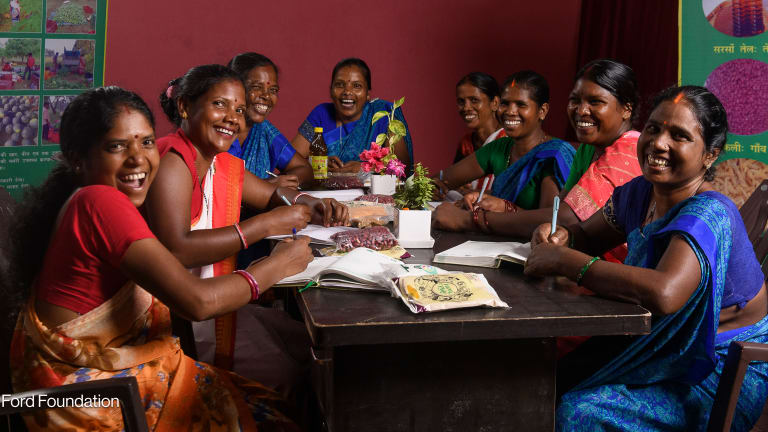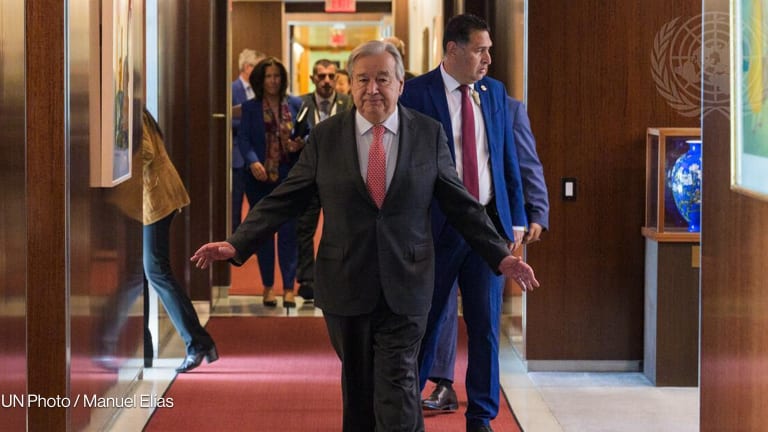
Evolutionary theory does not prescribe fitness as the key to survival: It is the ability to adapt which is decisive. Just so for institutions. Over the last 10 years, dramatic changes have transformed the development landscape. It remains to be seen whether the United Nations development system will live up to a key legacy left by our predecessors – that of demonstrating a significant capacity for profound adaptation responsive to changing needs.
At the end of the Second World War, the U.N. development system was created as a functionally decentralized system, organized as a set of loosely connected communities of interest. Organizations were created that focused on such issues as food, health, labor, education et cetera. Premised on a functionalist theory of politics, international communities of technicians would provide the building blocks of peace.
With decolonization and the onset of the Cold War, the U.N.’s mission was turned on its head as it focused on supporting the building of a large number of newly independent states. The mission became unequivocally to serve its member states, a mission well aligned to the realities of the Cold War. The U.N. development system helped dozens of states come into being as the colonial system receded.
With the end of the Cold War and the acceleration of globalization, a generation of development practitioners entered the 1990s with high hopes of seeing a development decade born of a peace dividend. But the ’90s turned out to be a lost decade for development as official development assistance budgets sharply declined. And so U.N. Development reinvented itself again, setting objectives and targets that could reignite support and interest for the development cause. The Millennium Development Goals were born and ODA was back in business, doubling over this last decade.
We will measure our success in achieving the targets we set in the late ’90s at the end of 2015. Meanwhile, though, the environment in which development cooperation finds itself today is dramatically different. This is in part reflected in the Busan Partnership for Effective Development Cooperation.
Recent estimates are that 75 percent of flows from north to south come from foreign direct investment, remittances and philanthropy. Between 2000 and 2010, some $200 billion has been generated from oil exploration in Africa alone. In the United States, not only do private contributions far outstrip official assistance, but some 70 percent of the contributions to international NGOs in the United States are privately funded, compared to the recent past, where a sizable percentage of NGO income came from public funds. The position and role of ODA in the development landscape has been transformed.
The emerging South is a phenomenon that has come to prominence in the last decade. The term BRIC had yet to be coined by Goldman Sachs a decade ago. At multiple levels, the emergence of powerful economies in the South has transformed the development landscape, and there is no actor that can escape the need to reposition accordingly. This represents a transformation in the landscape, not just an alteration in its boundaries.
A revolution has occurred in the last decade in the areas of traditional communications as well as new forms of social media, which has deep consequences for a vision of international cooperation in the future. The mission statements of Google, Facebook and Wikipedia are to make knowledge accessible, to promote universal connectivity and to create knowledge. These are all ambitious, transformative global missions. It took 10 years for the Internet to reach 50 percent of the U.S. population. It has taken five years for Facebook to reach 800 million people worldwide. Scale, speed and above all leverage – these are the core characteristics of the power of this new technology.
The substantive challenges U.N. Development faces are greater than ever. There is broad consensus on the science of climate change. Food projections indicate there will need to be an increase of some 50 percent by 2030 to meet forecast demand. Water demand is expected to increase by some 25 percent by 2025. And the International Energy Agency estimates that world primary demand for energy will increase by some 40 percent by the year 2030. There is growing recognition that the issues of fragility and violence constitute a major obstacle to development for a substantial subset of states – a subset that contains 70 percent of the world’s poorest people. The Arab Spring, for its part, represents a deep challenge not just for the U.N. development system, but for the United Nations as a whole.
The landscape has changed, and the role of ODA and U.N. Development needs to adapt. Reform of the U.N. development system is today almost exclusively focused on issues of development effectiveness. That’s good, but not sufficient: It’s great to improve the performance of the car you are driving but if you are heading for a dead end, getting there quickly isn’t a great achievement. What is required is far reaching strategic repositioning.

It is possible to envision some of the elements that will be critical. U.N. Development needs to relate to a world beyond ODA – to new state players, non-state actors, multiple sources of finance and powerful new technologies transmitting knowledge in totally new ways. U.N. Development needs to reach out and bring in major new partners, especially from the private sector and civil society. These will drive many of the solutions to the challenges outlined above.
Above all, U.N. Development needs to be an effective lever for change. Today’s development landscape will be kind to those who grasp Archimedes’s challenge – to have levers long enough to move the world. This is very different from trying to do everything for everybody. It will require difficult strategic choices to be made.
U.N. Development needs to reinvent itself a fourth time. A good place to start would be for the reforms to incorporate the following four elements.
First, the reform needs to be driven by an assessment of the U.N.’s role in meeting current major development challenges. The strategic choices to be made regarding what U.N. Development should focus on need to be based on an empirical analysis of the U.N.’s record, its impact, and its relative capacity compared to other instruments. These choices can no longer be driven by a search for compromise designed to keep all interests satisfied.
Second, in a world of newly emerging shareholders and stakeholders, U.N. Development’s work in generating shared values and international norms is more important than ever; the generation of shared values and norms is critical if there is to be a common commitment to redress the under-supply of global public goods.
Third, the reform must result in a radical strengthening of capacity in certain areas and the complete dismantling of capacity in other areas. There must be a major program of consolidation and mergers within the U.N. development system.
Fourth, the future election of the leaders of the major U.N. development institutions by the legislative bodies needs to be based on a transparent process informed by public program manifestos.
Elements of this article draw on a study currently being undertaken by Bruce Jenks and Bruce Jones on “U.N. Development at a Crossroads.”
Want to read more about innovative financing for development? Check out Busannovate, a blog brought to you by Devex in partnership with the United Nations Foundation, and launched with a thought-provoking guest opinion by Nobel Peace Prize winner Muhammad Yunus.








